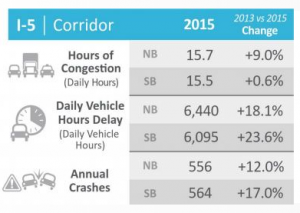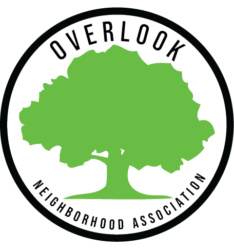1) Residential Infill notices
2) Public hearing on adidas expansion
3) Multi-Use Path on Greeley – Answers
4) Congestion pricing on Interstate 5
1) Residential Infill notices
 The city has sent out notices to single-family homes whose zoning could change if the Residential Infill Project moves forward.
The city has sent out notices to single-family homes whose zoning could change if the Residential Infill Project moves forward.
Owners of more than 135,000 properties recently received the mailing. This is required by state law whenever a change in the zoning could affect the value of a property — up or down. Addresses were pulled from the County Assessor’s Office.
Overlook residents and all of Portland should pay attention to these proposed changes because they could alter the character of residential neighborhoods in coming years.
The first thing to know is that these changes are proposals — not the law. You can learn more about them and tell the Planning and Sustainability Commission (PSC) what you think. Any new rules must be adopted by City Council before they become effective. And before adoption, they are refined and changed based on public testimony, as well as PSC and City Council amendments.
These proposals do not require you to sell your house or do anything to your property or home. They would only apply if you add to your existing house or build a new unit on your land.
Here’s a simple summary of the proposed new rules. You can also learn more on this city site.
2) Public hearing on adidas expansion
 Adidas recently put up signs around its campus announcing public “design advice request” meetings with the City Design Commission about its proposed expansion. The meetings will take place on April 26 at 1:30 p.m. and May 24 at 1:30 p.m. Both meetings will be at 1900 SW Fourth Ave., Room 2500A.
Adidas recently put up signs around its campus announcing public “design advice request” meetings with the City Design Commission about its proposed expansion. The meetings will take place on April 26 at 1:30 p.m. and May 24 at 1:30 p.m. Both meetings will be at 1900 SW Fourth Ave., Room 2500A.
There will be an opportunity at the meetings to provide oral and written comment on the project.
Adidas has proposed constructing three buildings on its campus in Overlook: a five-story building on the existing visitor parking lot that will include below-ground parking, a three-story building on the tennis courts and a single-story loading dock in the northwest corner of the campus west of N Greeley Avenue.
Read the formal statement here.
3) Multi-Use Path on Greeley – Answers
At the March Overlook Neighborhood Association General Meeting, Nicole Peirce from the Portland Bureau of Transportation updated neighbors about the upcoming Multi-Use Path on N Greeley Avenue. It will provide new bike and pedestrian travel lanes.
Several questions remained at the end of Peirce’s presentation. She agreed to send answers and has done so. Please see below. Peirce also has offered to return to update the neighborhood closer to the start of construction. We’ll be sure to take her up on that.
Answers from Nicole Peirce:
Did PBOT consider a road diet? Yes, we are looking at various lane reconfigurations for N Greeley. While we will not be doing a road diet as part of this project, the construction staging will likely require closing a lane in each direction. This will be a good test to see how Greeley would perform if we did a lane reconfiguration.
What will be the duration of the bike signal? At least eight seconds of green time. Discussion is ongoing with the signals engineers. We will monitor and adjust the timing as needed once the signal is activated. Also, the diagonal bike movement will be concurrent with southbound vehicles turning left and westbound vehicles turning right.
How will we maintain the MUP? Turns out we do have a small sweeper that will fit on the path. I’ve been in contact with the supervisors of sweeping in that area so they can figure out how to incorporate sweeping of the path in their workplan.
Where do pedestrians go from the north end of the path? There are a couple of options for pedestrians at the north end of the path:
There is an existing crosswalk where pedestrians can cross from the east side of the roadway to the west side and then continue north on the sidewalk along the west side of N Greeley.
Pedestrians can also go north along the east side of N Greeley to the stairs on the north side of N Going. These stairs lead down to the sidewalk/path along the north side of N Going.
What if a bike doesn’t trigger the loops? In the unlikely event that a cyclist finds their bike is not triggering the loops, please contact PBOT. We will send our maintenance folks out to adjust the sensitivity of the loop amplifiers until we get the system dialed in.
What if a car breaks down and there are no shoulders? Since there will be two lanes in each direction, a motorist with car trouble would be able to stop in the right-hand travel lane. Working within the cross section space available, the PBOT design team made the decision to eliminate shoulders to be able to accommodate a separated MUP. The team feels that the safety benefit of the separated MUP outweighs the benefit of having shoulders on this stretch of road.
4) Congestion pricing on Interstate 5
 The Oregon Department of Transportation will hold four public open houses in April to discuss the use of congestion pricing to help improve travel times and reliability on Interstate 5 and Interstate 205 in the Portland area. In addition, an online open house with information about the plan is open through April 19.
The Oregon Department of Transportation will hold four public open houses in April to discuss the use of congestion pricing to help improve travel times and reliability on Interstate 5 and Interstate 205 in the Portland area. In addition, an online open house with information about the plan is open through April 19.
ODOT also will visit the Overlook Neighborhood Association General Meeting on May 15 to let residents know how the plans might affect North Portland specifically. Stay tuned for more information in upcoming OKNA emails. In the meantime, residents can start to learn about and comment on the proposal.
The public may share experiences with congestion and express their views on congestion pricing either online or at the upcoming open houses in Oregon City, Tigard, Southeast Portland and Northeast Portland near Portland International Airport:
- Thursday, April 12, 5:30 to 7:30 p.m., Museum of Oregon Territory, 211 Tumwater Drive, Oregon City.
- Saturday, April 14, 10 a.m. to noon, Ron Russell Middle School, 3955 S.E. 112th, Portland.
- Wednesday April 18, 5:30 to 7:30 p.m., Tigard Public Works Auditorium, 8777 S.W. Burnham St., Tigard.
- Saturday April 21, 9:30 a.m. to 12:30 p.m., Embassy Suites Airport, Pine Room, 7900 N.E. 82nd, Portland.
Congestion pricing, also known as value pricing, refers to tolling options that are specifically designed to improve traffic flow. Congestion pricing systems charge higher prices for driving on a road when demand is greater, in the morning and evening rush hours, for example.
Some drivers choose to travel on other routes, at different times of the day or on other modes of transportation. Communities across the US have found these tools effective in improving traffic conditions and enhancing travel time reliability.
The open houses will be informal, drop-in events with ODOT project team members stationed throughout the room to provide materials, discuss the options and answer questions.
